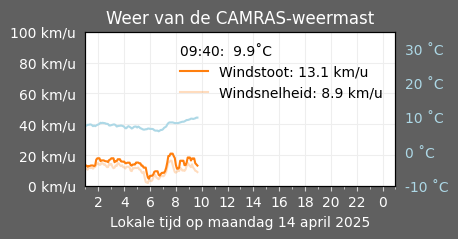Accidental discovery
In the early 1930s, radio engineer Karl Jansky of Bell Telephone Laboratories accidentally discovered that radio waves were emanating from the universe. He investigated interference on transatlantic radiotelephone connections at a wavelength of about 15 meters. He recorded radio noise from nearby thunderstorms. He detected the electrical discharges in thunderstorms at great distances because the ionosphere reflects the radio noise. However, he also discovered a very weak stable signal of unknown origin. It repeated exactly every 23 hours and 56 minutes, the rotation period of the Earth relative to the stars (sidereal day), instead of relative to the Sun (solar day). So this weak signal could not originate from the sun.
Front-page news
 Nowadays, we are not surprised at all that there are radio waves originating from the universe and help us to make new discoveries, such as hydrogen gas in the Milky Way and pulsars. But this accidental discovery was still a bridge too far for astronomers from that time. They were still sitting behind their telescopes. Yet with his discovery, Jansky made the front-page of the New York Times. He thought the radio waves he observed came from the direction of the center of the Milky Way and they did not come from an extraterrestrial intelligence.
Nowadays, we are not surprised at all that there are radio waves originating from the universe and help us to make new discoveries, such as hydrogen gas in the Milky Way and pulsars. But this accidental discovery was still a bridge too far for astronomers from that time. They were still sitting behind their telescopes. Yet with his discovery, Jansky made the front-page of the New York Times. He thought the radio waves he observed came from the direction of the center of the Milky Way and they did not come from an extraterrestrial intelligence.
Today, the memory of Jansky’s discovery is kept alive with the unit jansky (Jy), a measure of the strength of cosmic radio sources.
Radio waves from the universe
A radio amateur in the United States, Grote Reber, wanted to know more about this discovery. In the late 1930s, for his hobby, he built a parabolic dish antenna with a diameter of 9 meters in his backyard. The dish could only move in elevation. For years, he measured and mapped the radio noise from the Milky Way at various wavelengths between 9 centimeters and 2 meters. Furthermore, we can be pleased particularly that Reber was the first amateur radio astronomer to publish his results in the scientific journal Astrophysical Journal.
A radio spectral line?
During World War II, while the universities in the Netherlands were closed, Leiden astronomer Jan Oort coincidentally read the article of Reber. This worked out well because Oort did research on how the stars move in the Milky Way and how the Milky Way rotates. He was worrying about the problem that he could not look far enough into the Milky Way, as most of our Milky Way is invisible because of gas clouds and dust. By reading Reber’s article, he realized that radio waves are not hindered by dusty areas in the Milky Way. Therefore, sources of radio radiation must be observable throughout the galaxy. Moreover, Oort wondered about the possibility of a spectral line in the radio spectrum. If so then the velocity of the radio source can be calculated from the Doppler shift and then …
The 21 cm hydrogen line
Oort asked the young astronomer Henk van de Hulst to investigate this possibility. In 1944, Van de Hulst showed, based on a theoretical calculation, that the hydrogen atom has a spectral line in the radio spectrum at a wavelength of 21.106 centimeters (1420.406 MHz). Hydrogen is the most common element in the universe. However, the question remaining was whether the 21 cm hydrogen line might be detectable.
In 1948, Oort and his researchers got a German Würzburg 7.5 meter radar antenna (a remnant of the Atlantikwall from World War II) near the Kootwijk transmitter station. After a lot of development work, radio engineer Lex Muller and his group succeeded in observing the 21 cm hydrogen line on May 11, 1951, almost simultaneously with researchers in the United States and Australia.
First map of the Milky Way
Thereafter an intensive observation period began in Kootwijk. At the Leiden Observatory, Oort and his group processed the observations (at that time still manually) and soon they succeeded in showing that the interstellar hydrogen gas was concentrated in long, contiguous ribbon-shaped areas. With this discovery, they mapped the spiral structure of our Milky Way Galaxy for the first time. An Australian group with an 11-meter radio telescope near Sydney mapped the part of the Milky Way that is not visible in the Netherlands. The combined Dutch and Australian observations also showed that our Milky Way is not a flat disc, but is bent. With these results in a few years’ time, the Netherlands had taken a prominent place in the Milky Way research using radio methods.

